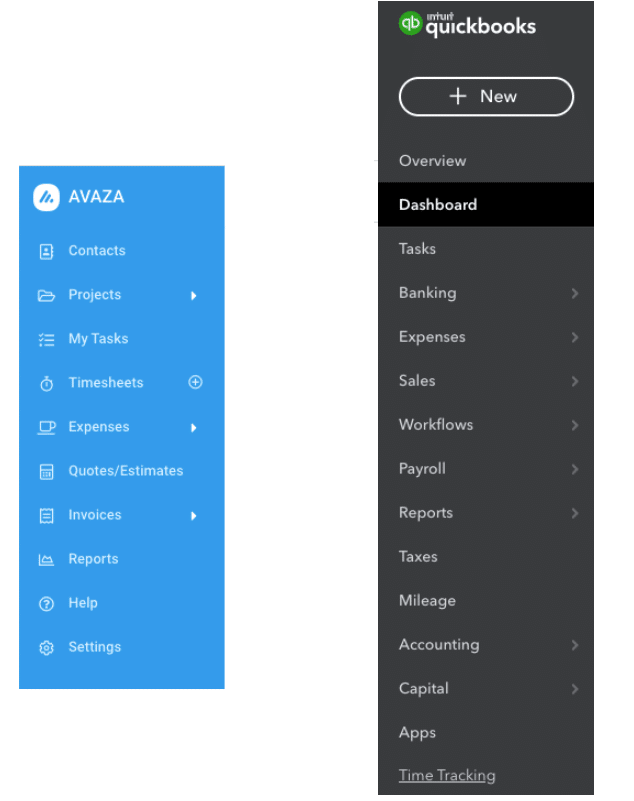We are living in the Age of Apps. I guess you could call this the App Age, like the Industrial Age and the Agrarian Age that came before. All business is now run on apps (or applications, which is how many people refer to software running on larger-than-mobile systems; I’m going to use “apps” here for all types). We communicate with each other on apps. We entertain ourselves, search for answers, and literally run our lives on apps. What’s interesting is how seldom “successful management skills in the age of apps” is addressed, including discussions about the managerial roles and responsibilities in our app-dominated environment.
I’m currently interviewing customers and business partners for an ecommerce company in a very competitive industry, and I’m seeing how our client’s apps—and their management of those apps—are causing some serious challenges for them. I also run a company myself that is 100 percent dependent on apps for its everyday activities. And we have more than one client who builds applications for other companies. So I do a lot of thinking about apps and the management of apps.
Here are some observations and solutions.
Essential management skills: You need the right apps, and the right people to own and customize those apps.
I’m sure you go through a vigorous comparison process when you go shopping to replace your CRM or ERP or ecommerce application. But it’s easy to make mistakes, especially when the salesperson keeps saying, “No problem!” All of us have felt the deep disappointment when we realized that whatever “it” was . . . was a problem.
The first mistake I see most managers make is to go for a more complex application than is needed, one where they have to use a dedicated programmer to make even simple changes.
Some of the more popular applications are like that, including Salesforce, Magento, QuickBooks (although it’s better than it used to be), and NetSuite. Small and even medium-sized businesses can’t afford the extra time and expense required by a programmer to constantly adjust the application to meet their needs.
The first person I hired when I started this company was an “app whisperer,” someone who understood our type of business and loved building infrastructure. She was the person who found the apps and evaluated them until she could recommend the most promising 2 or 3 candidates. We then went through a rigorous evaluation, usually via a trial. I’ve always found you can’t truly select the right application until you’ve started putting it through its paces with your own data, people, and processes.
As you evaluate, pay close attention to the navigation and user interface. How many clicks does it take to get to the area you want to work on? Are there numerous “nested” menus, or are the key tasks obvious and displayed on the sidebar or top nav at all times? Compare, for example, the difference between the sidebar on Avaza with the sidebar on QuickBooks.



Now, you might be thinking there’s not much difference, on the face of it. But the choices in Avaza are very distinct from each other. I know exactly what is “behind the door”—and what I can do—when I look at the choices in Avaza. It is all very obviously segmented based on what I want to work on.
QuickBooks, on the other hand, mixes activities, informational areas, and topics all in one sidebar, and raises more questions than it answers. What’s the difference between an “overview” and a “dashboard”? Aren’t banking, expenses, sales, workflows, etc., all “tasks”? What is “Accounting” doing in the midst of an accounting program? Isn’t it all “accounting”?
But it gets even worse. If you click on the “New” button on top, you get yet another pop-out menu that has all sorts of things, some of which overlap with what is in the sidebar:

Under Vendors, you can “Pay bills,” or “Pay bills online.” Um, OK. Why are some of these types of tasks here, and are they just another door to the same areas listed on the left nav? Yes, in some cases; no, in others. And they got really lazy showing an “other” category.
But wait! There’s more! Click on a gear icon in the top nav, and you get another popout menu:

Now, QuickBooks has been around for a very long time in software years, and they’ve integrated with other programs as the years progressed, which probably accounts for a lot of the confusion. But I remember trying to make it work for our Silicon Valley agency decades ago, and it had the same inherent “nested, overlapping” problem back then, frustrating users who kept wondering, “which menu item gets me where I want to go?”
Ironically, or maybe predictably, bookkeepers and accountants loved QuickBooks, because it was organized more for financial service companies than business owners. Business owners usually just threw up their hands and hired a financial person to run the application, which was obviously fine with the financial people.
The only way you can manage these types of unintuitive applications is to memorize the steps you need to take to do the things you do frequently, and ignore the rest. Which is why so many of the functions in software programs are never used.
One type of application that I’ve spent a lot of time evaluating is project management software. We ended up using Teamwork for a couple of years, partly driven by the desire to let clients see for themselves the status of specific projects. But only one client used this feature, since we had so many other ways of keeping them up to date.
Ultimately we ended up with Avaza, and I have to say—after seriously taking dozens of project management programs through their paces—that it is the most intuitive, adaptable, works-like-we-do program of its type that I’ve ever encountered. The runner-up, when we were evaluating, was a program that wasted too much screen space on the “look and feel,” and had that nested/hidden menu problem.
I think the “works like we do” aspect of an application is the most important, when you’re evaluating various candidates. It’s critical to map out your desired workflow and then compare that reality to how the program works. The navigation choices should match the types of activities your team carries out.
Moving information from one part of the program to another should happen with a click. With Avaza, we create an estimate in seconds; that estimate can quickly be converted into a project with tasks in minutes, and those tasks can be invoiced in seconds with another click. It’s slick.
How easy it is to customize the system for your own needs is another key consideration. Any of your top administrators should be able to add items, change field names, generate custom reports, and more, without the help of a programmer.
You need to be constantly improving your apps.
You would think that you could just set up an application and get it running, and that would be it, but this never happens. There’s always something new that comes up, something unexpected that must be accommodated.
In addition to the “app whisperer,” you also need a system builder. If you choose the right apps, this person shouldn’t need to be a programmer, but rather a super-organized individual who understands your business workflows. It’s difficult to find someone good at this; they need to see the big picture as well as be obsessive about the details; able to teach others; and not the type to interact with their hands on their hips.
It’s also a good idea, as part of your management-in-the-age-of-apps strategy, to have a core infrastructure team that “owns” the various apps that are critical to your business and who work closely together to make sure the apps are always as efficient as they can be. Everyone should be on the lookout for double entry or frustrating “takes too long to do this” activities that will bog down your team and suck the enthusiasm out of their business day.
If your apps are running smoothly, your business will run smoothly. If you are constantly looking for ways to streamline operations and make life easier for all concerned, you will stay competitive. These days the biggest threat to any business is a more agile competitor who has built a system that gives customers and employees easier ways to do what they want or need to do. Unhindered by legacy systems or long-accepted but “brittle” workarounds, they can emerge and start taking market share from the more established companies at an alarming rate. I’ve seen this happen so many times.
Complacency is death for any company, in the Age of Apps.
The roles and responsibilities of an Age of Apps manager
The roles and responsibilities of the company’s top manager have changed significantly in the Age of Apps. First, you need to focus on three areas simultaneously and continually:
1. The bigger-picture pressures.
Nothing stands still for very long in the Age of Apps. As I mentioned, competitors can emerge out of nowhere, armed with slick new apps and streamlined data integration. Someone in your organization (along with you, of course) needs to keep an eye on these trends. Set up alerts. Every few months, do some Googling in your area. Pay attention to what is being said in discussion groups.
2. The appropriateness of your apps.
It doesn’t take long for a substandard app to start tripping up your company’s efficiency. Unfortunately, many workers don’t feel they should complain when things are a little frustrating. They just think it’s part of the job, and they also pick their battles when it comes to bringing up concerns. No one wants to be viewed as a wimp or a whiner. So sluggish or inconvenient app-based processes can be having serious effects on your company’s progress before you catch wind of it.
Always ask, in team meetings, if there is anything that is too slow or too confusing. This gives the reluctant-to-whine worker an opportunity to bring up an issue.
And keep track of how many apps your workers need to use every day to get their jobs done. If one task involves several apps, you may have to find a way to consolidate those activities into a more streamlined system. And just because your workers are smart enough to navigate through a convoluted system doesn’t mean you should keep it. Think how much faster they could work if they had streamlined apps.
3. The in-the-weeds details.
The solution to #2 is to get into the trenches on a regular basis. The dictum “management by walking around,” made famous by David Packard of HP, applies as much to our virtual environment as to an office- or factory-based workforce. The best way to do this is to “visit” with workers in the trenches and ask them to show you how they do what they do.
Share a screen if the work is digital. Make sure you announce ahead of time, to the entire group, that you will be doing this, so no one is petrified when you contact them out of the blue to spend some time watching what they do. Also make sure that they understand why you’re doing it—that the goal is always to remove any barriers to their efficiency.
Improve your ability to give instructions.
You may think you’re good at giving instructions, but unfortunately I haven’t met very many top managers who are.
There are “make it so” managers who provide no instructions but are lucky enough to have smart workers who figure it out themselves; there are “stream-of-consciousness” managers who talk and talk about the subject without actually giving instructions (and leaving their workers unsure what is expected of them); and there are “do as I say, not as I do” managers who are constantly complaining about efficiency but often waste their workers’ time. If you recognize yourself here, you can and should change your methods.
How well you give instructions is even more important in the Age of Apps (not to mention the Age of Pandemics), because your workers are on their own more than they used to be. Their success depends in large part on how well you give instructions.
People will work happily and efficiently when they know exactly what they are supposed to do and how to do it. Those who give good instructions always do this:
- Start with the big picture, saying why something should be done and what success will look like. Include any previous work done in this area, the lessons that were learned, and how this time it’s going to be different.
- Give them an overview of the steps involved.
- Go over the details with them, making it very clear who is going to do what.
- Ask for any questions, comments, or concerns.
- Keep updating the instructions as you learn more and can make improvements.
Someone on your staff should be responsible for building and maintaining standard operating procedures, which can be given to anyone who is starting to do a new task. Apps such as Loom.com make it easy to quickly create instructional videos. But you should also have a step-by-step instruction sheet and/or checklist for the work that is done by your team.
Standards are higher than ever; you really need to be at the top of your management game.
One of the characteristics of the Age of Apps is that customers are using apps, themselves, all the time. They have come to expect that they can “do” a number of things on your site or app. For example, they expect that all of your employees have access to their records and history, and can help right away if there is a problem. They expect you to keep their information secure and private.
Workers have the same sorts of expectations. They don’t want to work where the apps are cumbersome or confusing. They want to be able to click-click-click all day, making progress as they go.
You and your apps are not being compared to your competition so much as you are being compared to sites such as Amazon, which continues to lead the way when it comes to making it easy for customers to do whatever they want to do.
“You’re only as good as your apps” definitely holds true today, but the corollary is “. . . and how well you manage your apps and the people who use them.”
Best of luck.





